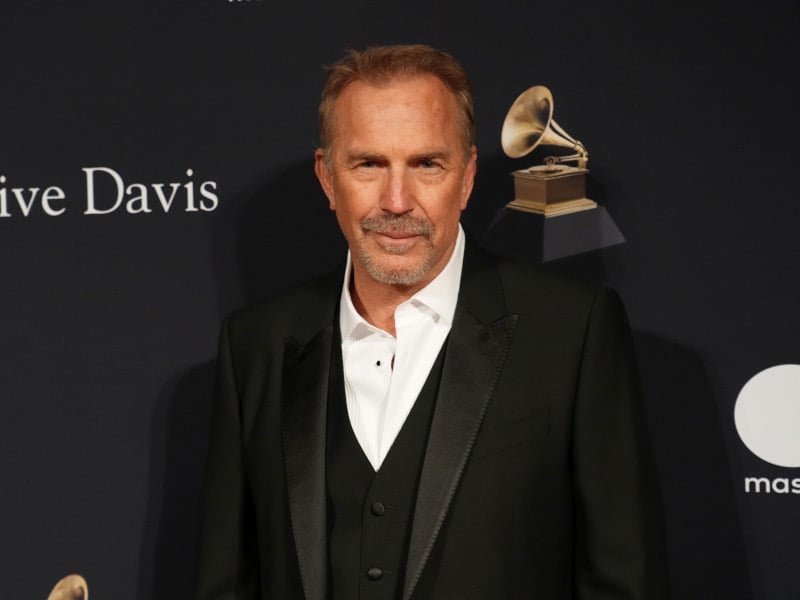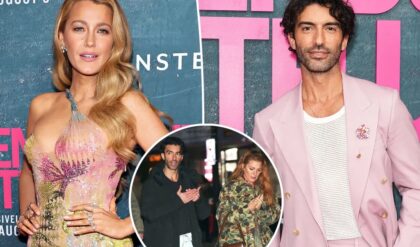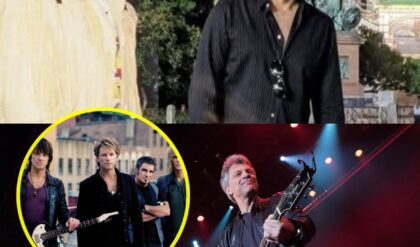Kevin Costner is a name synonymous with Hollywood success, yet behind his legendary career lies a life full of ups and downs, personal challenges, and remarkable triumphs. From humble beginnings to becoming a renowned actor, director, and producer, Costner’s journey is one of resilience and dedication, marked by decisions that often defied expectations. His rise to fame wasn’t instant, and it was the struggles he faced early on that shaped him into the multifaceted star we know today.

Costner’s career began in the late 1970s, when he took on small, often unnoticed roles. Although these early years did not lead to immediate recognition, they were critical in honing his craft and understanding the intricacies of the film industry. His time in various TV shows and films served as a testing ground, where he gradually improved his acting skills. It was through these struggles that Costner’s tenacity and passion for the craft began to take shape. Despite the lack of attention at first, he never gave up on his dreams.
A major turning point in his career came in 1987 with the film The Untouchables, where he played officer Elliot Ness. Although not the lead role, his performance earned praise from critics and audiences alike, proving he could hold his own alongside established stars like Sean Connery and Robert De Niro. This marked the first step toward his ascent into Hollywood’s A-list. Following this, Costner appeared in No Way Out (1987), where his ability to switch between action and emotional drama became evident. These roles were pivotal in building his reputation as a versatile actor, able to tackle different genres with skill and dedication.
However, it wasn’t until the early 1990s that Costner’s career truly exploded. His role in Robin Hood: Prince of Thieves (1991), despite the film’s mixed critical reception, was a commercial success that solidified his place as a major star. Audiences were captivated by his portrayal of the legendary hero, and it opened doors to even greater opportunities. Yet, it was Dances with Wolves (1990) that proved to be the crowning achievement of his career. Not only did Costner star in the film, but he also directed and produced it. The movie, a groundbreaking portrayal of Native American culture, won seven Academy Awards, including Best Picture and Best Director. This achievement not only solidified Costner’s status as an actor but also as a visionary filmmaker.
The film was significant for more than just its accolades; it altered the portrayal of Native Americans in mainstream cinema, offering a respectful and accurate depiction of their culture and way of life. Costner’s commitment to authenticity in the film was evident in every detail, from the costumes to the language used by the characters. The story itself, centered on a Union soldier forming a deep bond with a Native American tribe, resonated with themes of unity, forgiveness, and human connection, which were unprecedented in Hollywood at the time. Dances with Wolves was not just a box-office hit but a cultural milestone that reshaped the industry’s approach to Native American representation.

Despite his success, Costner’s career wasn’t without its controversies, particularly during the 1990s when some of his choices seemed to surprise and even disappoint his fans. Perhaps the most talked-about was his refusal to participate in sequels to some of his most iconic films. After the massive success of The Bodyguard (1992), a sequel was quickly planned, but Costner declined to reprise his role. Similarly, he turned down a role in Speed 2: Cruise Control (1997), a sequel to the successful Speed (1994). These decisions sparked criticism, especially considering the commercial potential of the sequels. However, Costner’s refusal to settle for easy profit-making ventures reflected his desire to seek out more meaningful, creative projects.
One of the most notable of these was The Postman (1997), a post-apocalyptic drama that he starred in, directed, and produced. Despite heavy investment and high expectations, the film was a commercial failure and received harsh criticism for its pacing, script, and overall execution. However, rather than be defeated, Costner took full responsibility for the project’s shortcomings. His resilience in the face of such failure further cemented his reputation as an artist who valued creativity over mere financial success.
Costner’s personal life, too, has been marked by both triumph and tragedy. In 1990, at the peak of his career, he suffered the sudden loss of his mother, Sharon, while filming Dances with Wolves. The grief of losing his mother, coupled with the immense pressure of completing such a significant film, could have easily broken him. But instead, Costner channeled his pain into his work, using it as motivation to finish the film that would become his greatest achievement. His ability to turn personal tragedy into creative energy speaks volumes about his strength and determination.

Costner’s first marriage to Cindy Silva, which lasted for 16 years, also faced challenges, and the couple divorced in 1994. Despite the end of his marriage, Costner has always remained a devoted father, prioritizing his children above all else. He faced the difficulties of co-parenting under the scrutiny of the media, but never allowed his personal life to overshadow his commitment to his family. Costner has since expressed that his children have been a significant source of inspiration in his life.
More recently, in 2024, rumors surfaced about a potential romance between Kevin Costner and Jennifer Lopez, following their respective divorces. The two stars were spotted together in Aspen, sharing a relaxed moment that fueled speculation about a new relationship. While nothing has been officially confirmed, their connection—whether romantic or simply a new friendship—seems to be a symbol of their shared experiences of personal reinvention after major life changes.
In many ways, Kevin Costner’s life mirrors the stories of the characters he has portrayed on screen: resilient, complex, and ever-evolving. From the struggles of his early career to the massive success of Dances with Wolves, and the challenges in his personal life, Costner’s story is one of perseverance and growth. Despite setbacks and failures, he has remained true to his artistic vision, and his legacy, both as an actor and a filmmaker, continues to inspire future generations. His life is a testament to the power of resilience and the importance of pursuing one’s passions, no matter the obstacles.





